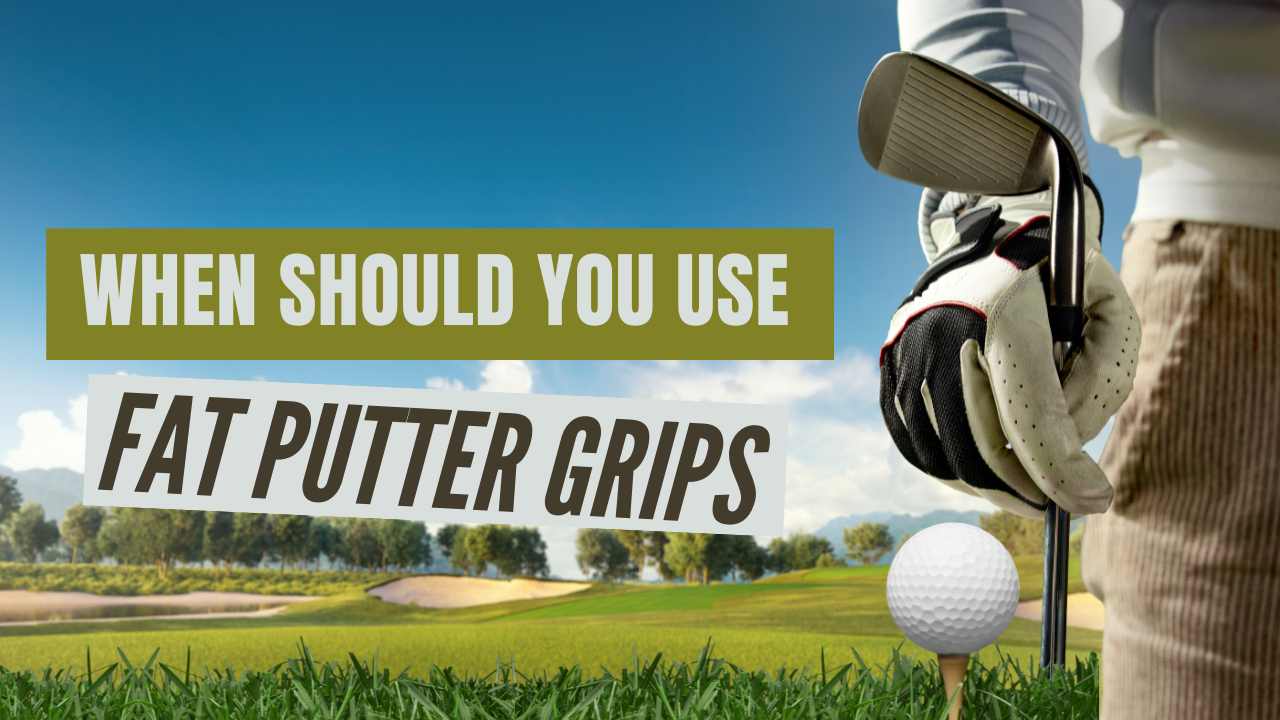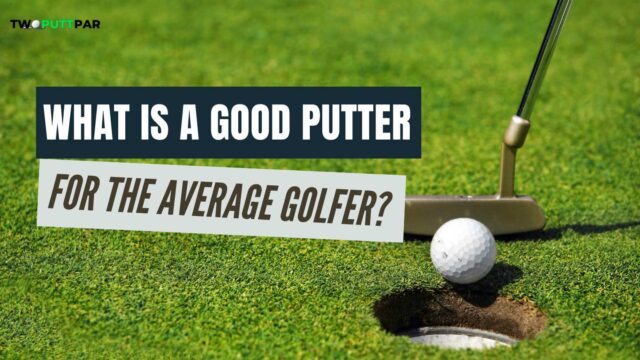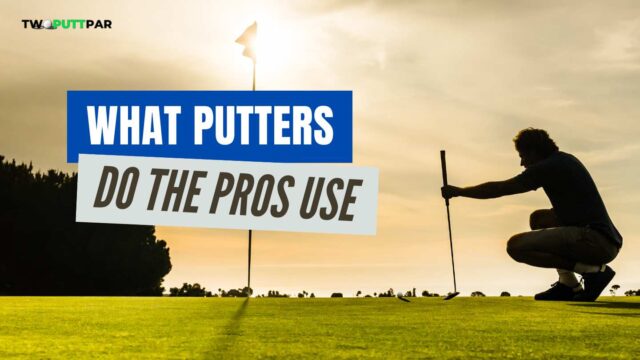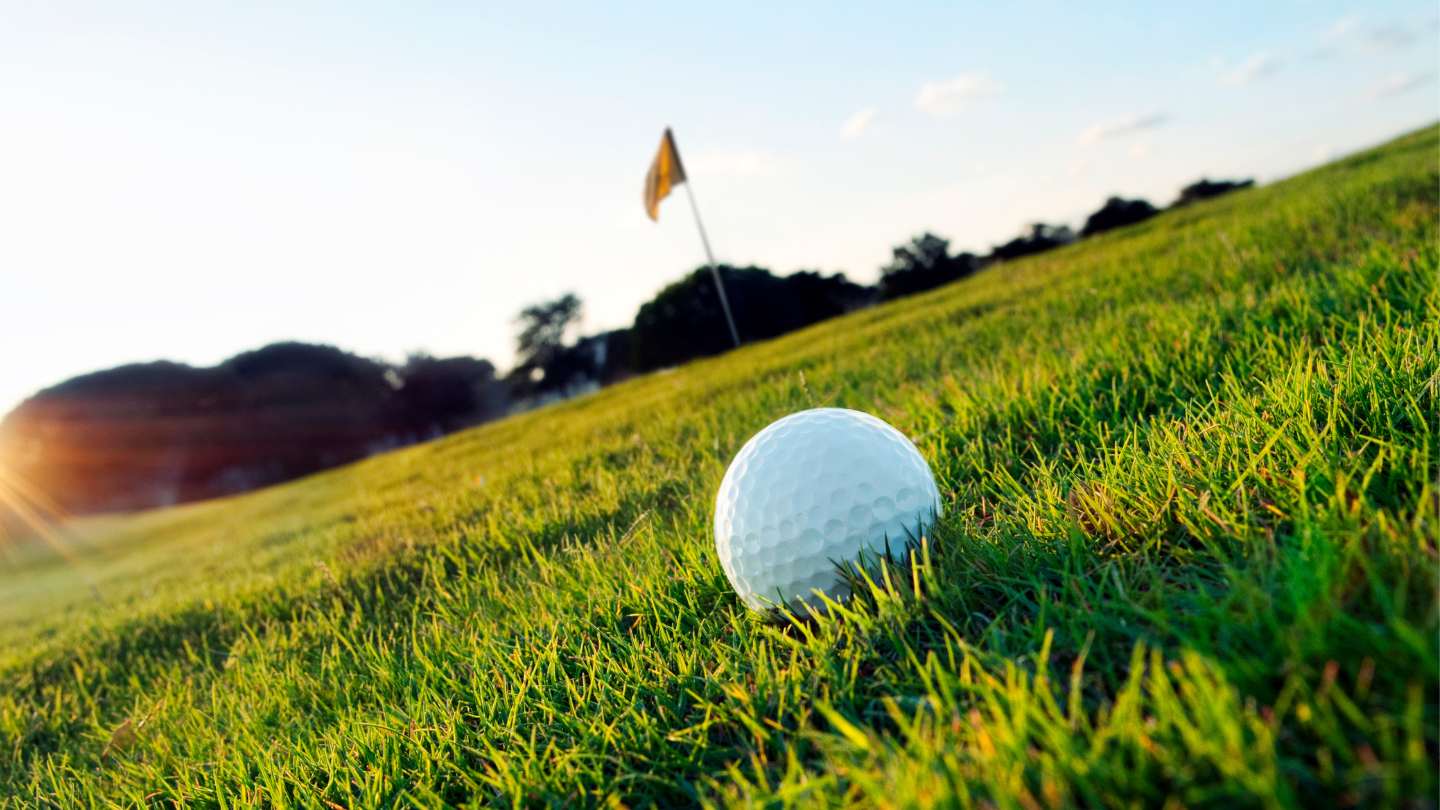
Mid-Handicap golfer who loves to share his rounds and experiences playing courses all around the UK in a hope that it will help others find those hidden gem golf courses.
I seek out golf courses that don’t get the credit they deserve and are often overlooked for the bigger more well known ones.
Fat putter grips have gained popularity in recent years due to their ability to improve putting performance.
These grips have a larger diameter compared to traditional putter grips, providing more stability and control during the stroke. But when should you consider using a fat putter grip?
In this post, we will explore the benefits of using fat putter grips and when it is most appropriate to make the switch.
You should use fat putter grips when you want to reduce wrist action in your putting stroke, improve your control and accuracy, and achieve a more comfortable hand placement.
What Is a Fat Putter Grip?
A fat putter grip is a larger, thicker type of golf grip that reduces wrist action and encourages a pendulum-like swing in the putting stroke.
Fat putter grips have significantly altered the way golfers approach their putting game.
Their design focuses on reducing the influence of the hands and wrists during the swing, which can lead to improved control and accuracy.
This is achieved by their larger diameter, which naturally encourages the golfer to hold the club more in the palms of their hands, promoting a smoother, pendulum-like swing.
They come in various sizes and materials, enabling golfers to find the perfect fit based on their personal comfort and playing style.
Despite requiring some adjustment period, many golfers have found these grips beneficial in enhancing their overall putting performance.
Find out – What Putters Do The Pros Use?
Why You Should Use Fat Putter Grips
You should use fat putter grips because they offer greater control over your putter, limit wrist movement and potentially improve your overall putting performance.
Greater Control of Your Putter
Fat putter grips are designed to provide golfers with enhanced control over their putters. Their larger diameter naturally encourages a gentler grip, reducing hand tension and allowing for a smoother, more controlled swing.
This can lead to increased accuracy on the green, helping you to sink more putts and lower your scores.
Limitation of Wrist Movement
One key advantage of fat putter grips is their ability to limit wrist movement during the stroke. By encouraging a grip that is more in the palms of the hands rather than the fingers, these grips reduce the risk of excessive wrist action, which can often lead to mis-hits. This results in a more stable, pendulum-like stroke that can greatly enhance consistency and accuracy.
Improved Putting Performance
The benefits of using a fat putter grip extend beyond just control and wrist action. Several professional golfers, including Bryson DeChambeau, Lydia Ko, and Brooke Henderson, have found success using these grips.
The reduced grip tension and improved stroke mechanics can contribute to an overall improvement in your putting performance, making fat putter grips a worthwhile consideration for any golfer looking to up their game on the greens.
When You Should Use Fat Putter Grips
Fat putter grips should be used when you want to reduce grip pressure, limit hand movement and twisting, and promote a smoother stroke in your putting game.
Fat putter grips are known for their ability to reduce tension in your grip, which can be particularly beneficial if you typically hold your club too tightly.
A relaxed grip can lead to a smoother stroke and potentially more accurate putts. Furthermore, the larger diameter of these grips can help to limit movement and twisting in the hands during the stroke, offering greater control over the clubface.
For golfers who struggle with overly dominant hand action, fat grips can also be advantageous. They allow for a side-by-side hand placement that feels comfortable and reduces the dominance of one hand over the other. This balanced hand action can contribute to a more consistent stroke.

How Does a Fat Putter Grip Compare To a Standard Putter Grip?
A fat putter grip differs from a standard putter grip in terms of size, weight, and how it influences the golfer’s stroke mechanics, offering benefits such as reduced hand dominance, improved stroke smoothness, and increased stability.
Size and Feel
Fat putter grips are significantly larger than standard ones. This larger size can help reduce grip pressure which can lead to a smoother, more controlled stroke.
The bigger size also allows for side-by-side hand placement, reducing the dominance of one hand over the other to contribute to a more consistent stroke.
Weight
Fat putter grips tend to be heavier than standard grips. This additional weight can affect the balance of the club, making the putter head feel lighter.
As a result, golfers often find they have better control and can make a smoother, slower stroke, which can be beneficial for those who tend to hit their putts rather than stroke them.
Stroke Mechanics
With a fat putter grip, the player’s wrist action is typically reduced due to the larger size of the grip. This leads to more stable arms and a more pendulum-like putting stroke, which can improve accuracy and consistency.
It’s especially useful for golfers struggling with too much hand and wrist action in their putting stroke.
Suitability
While both types of grips have their place, the choice between a fat or standard putter grip largely depends on the individual golfer’s preference and putting style.
Some golfers may find the larger, heavier fat grip more comfortable and beneficial in improving their putting performance, while others may prefer the feel and control of a standard grip.
How To Choose The Right Fat Putter Grip For Your Game
Choosing the right fat putter grip for your game requires careful consideration of factors such as the grip’s taper, thickness, shape, texture, and how it affects your stroke mechanics.
Grip Taper
Some fat putter grips are tapered, meaning they’re thicker at the top and thinner towards the bottom, while others are non-tapered. The choice between a tapered or non-tapered grip can significantly affect your putting stroke.
A tapered grip may promote wrist action, whereas a non-tapered grip tends to encourage a shoulder-driven stroke. Therefore, consider your natural stroke style when deciding on taper.
Grip Thickness
The thickness of a fat putter grip can range from slightly larger than standard to jumbo size. A thicker grip can help reduce hand and wrist action, promoting a smoother, more pendulum-like stroke.
However, it can also make the putter head feel lighter, which might affect distance control. It’s important to find a balance that suits your personal comfort and stroke mechanics.
Grip Shape
Fat putter grips come in various shapes, including round, square, and triangular. Each shape offers a different feel and can influence your stroke differently.
For instance, a round grip can facilitate wrist action, while a square or triangular grip might promote stability. Experiment with different shapes to find what works best for your putting style.
Grip Texture
The texture of the grip, whether smooth or ridged, can also affect your stroke. A smooth grip might offer more flexibility in hand placement, while a ridged grip can provide additional tactile feedback and potentially enhance grip stability.
Personal preference plays a significant role here, so it’s worth trying out different textures to see what feels best in your hands.
Stroke Mechanics
Finally, consider how a fat putter grip might alter your stroke mechanics. Because of their size, fat grips can reduce wrist action and encourage a more stable, shoulder-driven stroke. However, this might not suit golfers who naturally use more wrist action or prefer a faster stroke.
FAQs
Q: What is the best way to grip a fat putter grip?
A: There are several ways to grip a fat putter grip, but the most common technique is the “p2 react tour” grip. This grip involves placing the thumbs on the front of the grip and wrapping the fingers around the back. This grip allows for a more stable hold on the putter.
Q: How does grip size affect putting?
A: Grip size can have a significant impact on putting. A grip that is too small can cause the golfer to grip the putter too tightly, leading to tension in the hands and wrists. On the other hand, a grip that is too big can make it difficult to properly release the putter head, resulting in a lack of control and accuracy.
Q: What is an oversize putter grip?
A: An oversize putter grip is a grip that is larger in diameter compared to standard grips. These grips are commonly used by golfers who prefer a grip that fills the hands and promotes a more relaxed grip pressure.
Q: What are the benefits of using a fat putter grip?
A: Using a fat putter grip could help you achieve a more consistent putting stroke. The larger grip size can lead to a more stable and relaxed grip, which can result in improved distance control and accuracy.
Q: What is the Flat Cat Big Boy grip?
A: The Flat Cat Big Boy grip is a jumbo putter grip that is designed to provide maximum stability and control. It features a unique design with a flat front and curved back, allowing for a consistent hand position throughout the putting stroke.
Q: What are some other grip styles besides fat putter grips?
A: Besides fat putter grips, some other grip styles include the pistol grip, super stroke grip, and traditional grip. Each grip style has its own unique characteristics and can affect the feel and control of your putter.
In Conclusion
Fat putter grips offer numerous benefits that could improve your putting game.
They can help you grip the golf club more gently, potentially enhancing your control and accuracy, and they allow you to change the placement of your hands on the grip for added comfort.
However, transitioning to a fat grip might require some adjustments to your putting style and may take time to get used to.
Affiliate Disclaimer – As an affiliate, we may earn a commission from qualifying purchases. We get commissions for purchases made through links on this website from Amazon and other third parties.









Leave a Reply